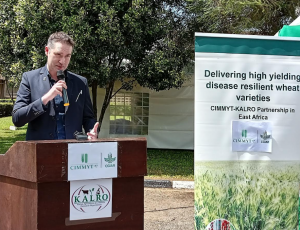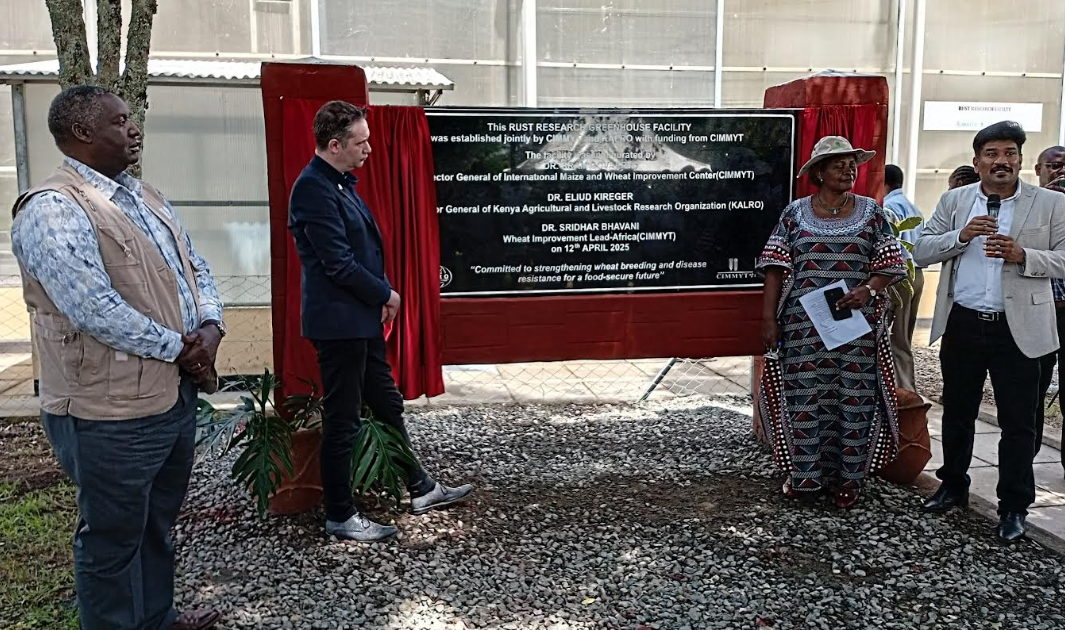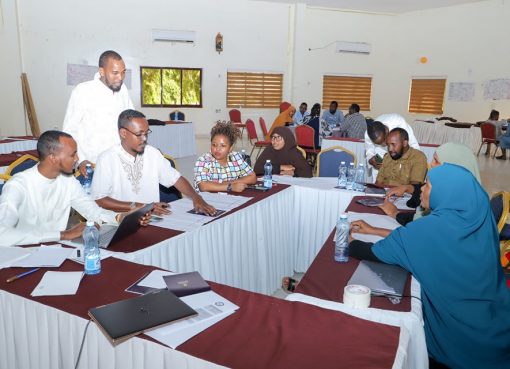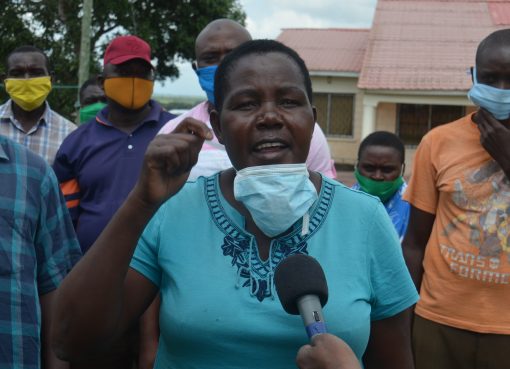Wheat production in Kenya is set to increase after the International Maize and Wheat Improvement Center (CIMMYT), in partnership with the Kenya Agriculture and Livestock Research Organization (KALRO), inaugurated a Sh1.3 billion (USD 1 million) rust research greenhouse facility at the KALRO Center in Njoro, Nakuru County.
CIMMYT Director General Dr. Bram Govaerts said the facility will enhance screening of wheat varieties to help establish the latest diseases.
“What we are doing is to accelerate and improve the capacity of CIMMYT and KALRO collaboration. We have screening facilities where we can test our wheat varieties for the latest diseases so that farmers can receive wheat seed that is resistant to diseases,” Govaerts stated.
He announced this in KALRO Njoro, where they also launched a cold room to store seeds and facilitate the multiplication process.
Acknowledging the enormous challenges facing the wheat sector, Dr. Govaerts said there is hope considering that there are multiple challenges not only because of climate change and accelerated diseases but also because of soil degradation.
“The wheat here is the new wheat varieties that are going to go around the globe. It is one of the spots in the world where we test the wheat varieties for new diseases,” he stated.
KALRO Deputy Director (Crops) Dr. Felister Makini lauded the KALRO-CIMMYT partnership, saying it gears towards escalating wheat production in the country.
“The capacity that they are building, both in terms of the infrastructure now and even the scientists, is very impressive, and this is going to go a long way in increasing the production of wheat in our country,” stated Dr. Makini.
She said although Kenya produces wheat, 80 percent of the product is imported to enable the industry to meet the required quantity.
“As you are aware, we are importing almost 80 percent of our wheat into the country, so we are looking at how we can increase productivity, especially in this day and age where climate change is a serious problem and therefore these facilities are going to help us increase our capacity,” she explained.
Dr. Makini termed the facility vital. “As we refine and accelerate the variety, development, and identification of these diseases, having a foresight on pests and diseases is going to help impact positively in terms of identifying lines or varieties that actually can be resistant,” she added.
The Deputy Director said KALRO has developed new varieties that have been released and urged wheat farmers to embrace them.
“If you keep on using and recycling the same seed, the disease pressure will increase. The farmer will likely have even more diseased crops, which will reduce the yields. Our advice to farmers has been, at most, to use the seeds for two or three seasons. But after that, go for the certified seeds,” she explained.
In Njoro, Dr. Makini said they are making great efforts to produce more seeds, especially of these new varieties, and that KALRO has set up a Mkulima shop to enable farmers to buy the certified seeds.
She further allayed fears of genetically modified seeds, clarifying that the wheat disease outbreaks were as a result of traditional breeding.

“There is no GMO here yet. So, even if you see that the crops are dying or you see that the crops have diseases, it is not because of GMOs. It is because of the traditional breeding,” Dr. Makini reiterated.
CIMMYT Principal Scientist and Wheat Improvement Lead, East Africa, Dr. Sridhar Bhavani, said through research, they have developed at least 250 varieties in the past 15 years.
“We have already released over 250 odd varieties; we are staying ahead of the game by releasing varieties even before the pathogen moves to cause devastating diseases,” Dr. Bhavani noted.
The principal scientist said the rust research facility will also serve as a breeding hub to enrich resistance and build future resilience for pests and diseases for newer varieties that are to be deployed not only in Kenya but the rest of Africa as well.
Dr. Bhavani further said that breeding products developed at the Njoro facility will be exchanged through a partnership called the Wheat Improvement Network for Africa, wherein over 16 countries will receive the high-yielding varieties combining disease resistance and also climate resilience to be tested, advanced, and deployed in other target environments.
He stated the partnership was further targeting to assist smallholder farmers in increasing their yields by educating them not only on how to apply fungicides but also on how to make it profitable for them through conventional breeding.
“The current varieties can have a yield potential anywhere between 6 and 8 tonnes per hectare, which is almost a 50 percent increase or doubling of what used to be with the older varieties,” Dr. Bhavani stated.
By Wangari Ndirangu and Douglas Namunane





